What's inside the "Air Quality Monitor" (analysis and analysis)
Having read one of these days on Geektimes about the CO2 monitor from dadget , I could not pass by such an unusual device. I bought it for its intended use “here and now”, because I was concerned about the quality of the air in the apartment, but with an eye to integrate it into the “smart home” system in the future. That's the last speech in the post and go.
I just want to warn you that under the cut there will be only photos and my assumptions, unfortunately I don’t have the opportunity to check everything in practice.
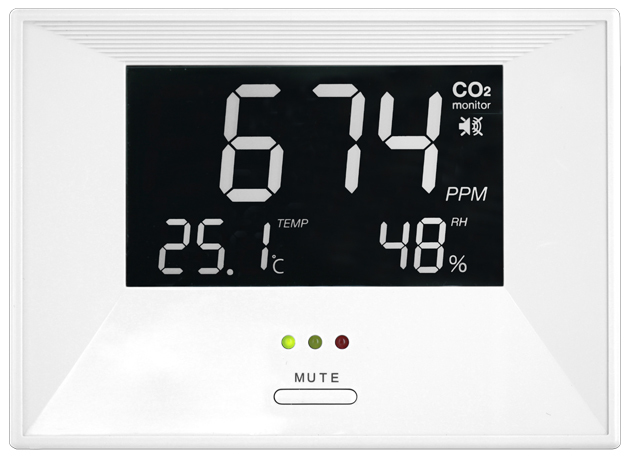
upd:
added, not due to criminal negligence, photos of the general plan.
Also added bonus video work CO2 sensor
A small preliminary summary of the information that I collected before I decided to disassemble the device. Of course, Dadget did not develop this device themselves. Real manufacturer: Zyaura . Their website states that there are two modifications - ZG1683R and ZG1683RU - the latter has the ability to connect to a computer via USB for taking readings. Since, when connected to a PC, my device is not defined as a device and does not interact with the computer at all, I concluded that this is most likely a ZG1683R.
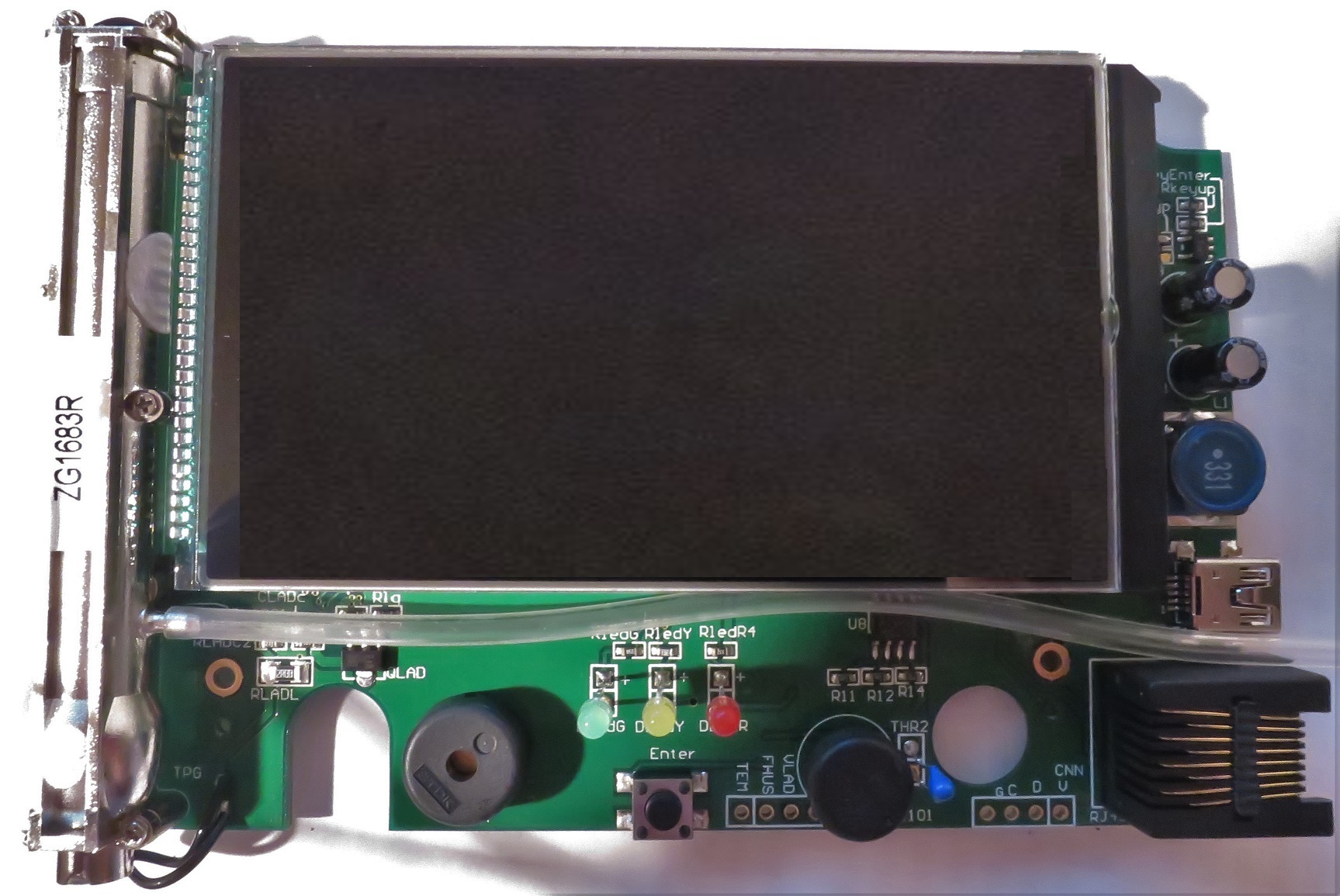
The device is disassembled by unscrewing 3 screws from the back side. Then just need to overcome the plastic latches on the perimeter. The first thing that catches your eye: behind the plug on the case was an RJ45 connector.

The device board is well signed, for example, its model is indicated next to the humidity sensor - it is HS1101. Unfortunately, I couldn’t find any inscriptions on the sensor itself, but if it’s really HS1101, then the device’s humidity measurement range of 20% -90% seems very strange, since the sensor itself can measure from 1% -99% by datasheet. The strangeness of cutting the range to 20% is that in the winter time in the apartment, if the owner did not bother with additional moisture, the device will always show “Lo” instead of humidity.
')
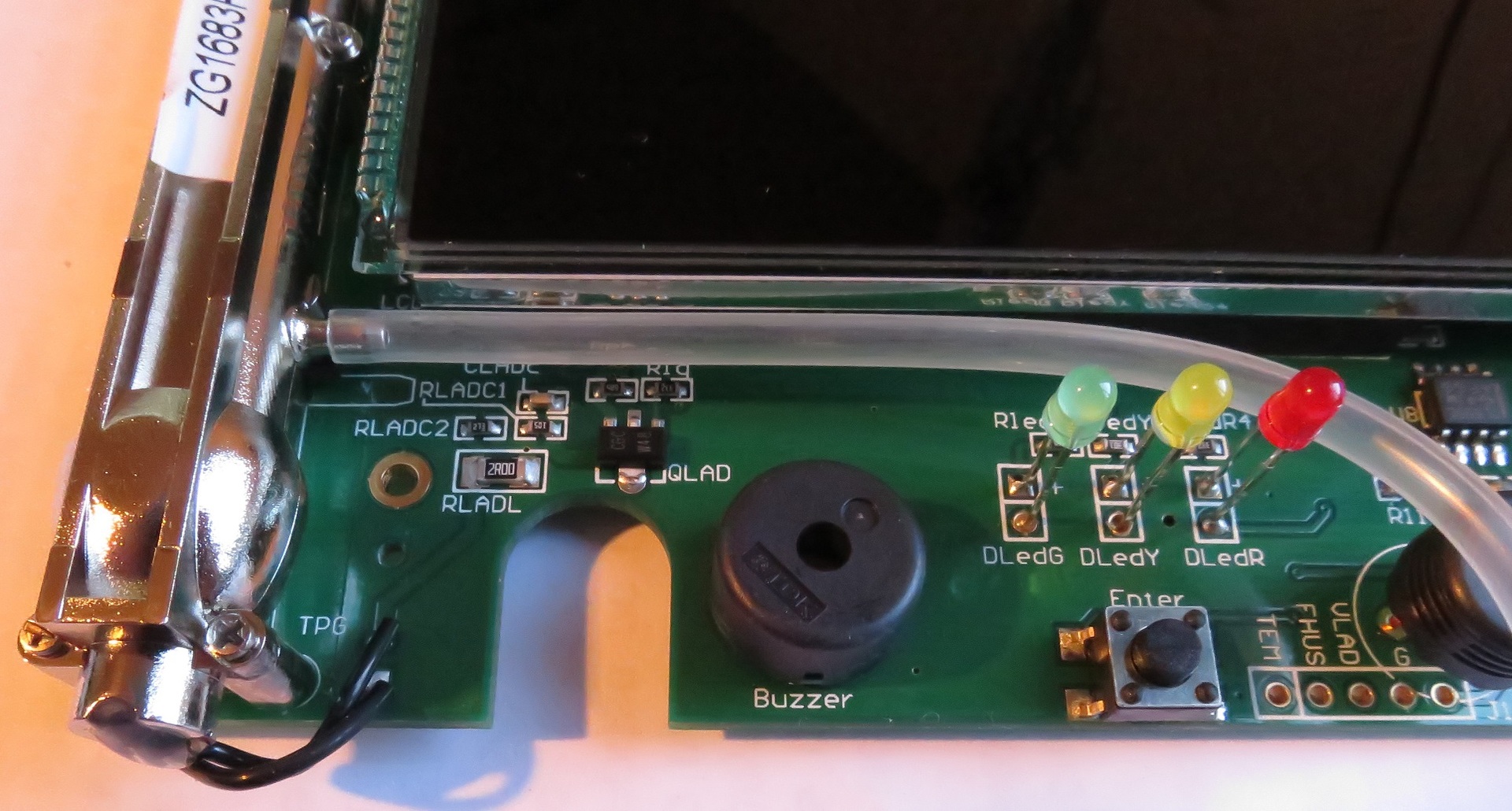
Go to USB. It can be seen that the data ± tracks from the connector go somewhere deep under the screen. Unfortunately, I did not dare to unsolder a huge number of legs of the screen to look under it, fearing to damage the expensive device due to its curvature. Where exactly the tracks go, I could not determine, but under the screen you can see the seat under the microcircuit.

I can assume that the tracks go to it, and then you can say goodbye to USB data removal, or, alternatively, they can go to some other chip, and USB data sharing is turned off by software or hardware - this is more optimistic .
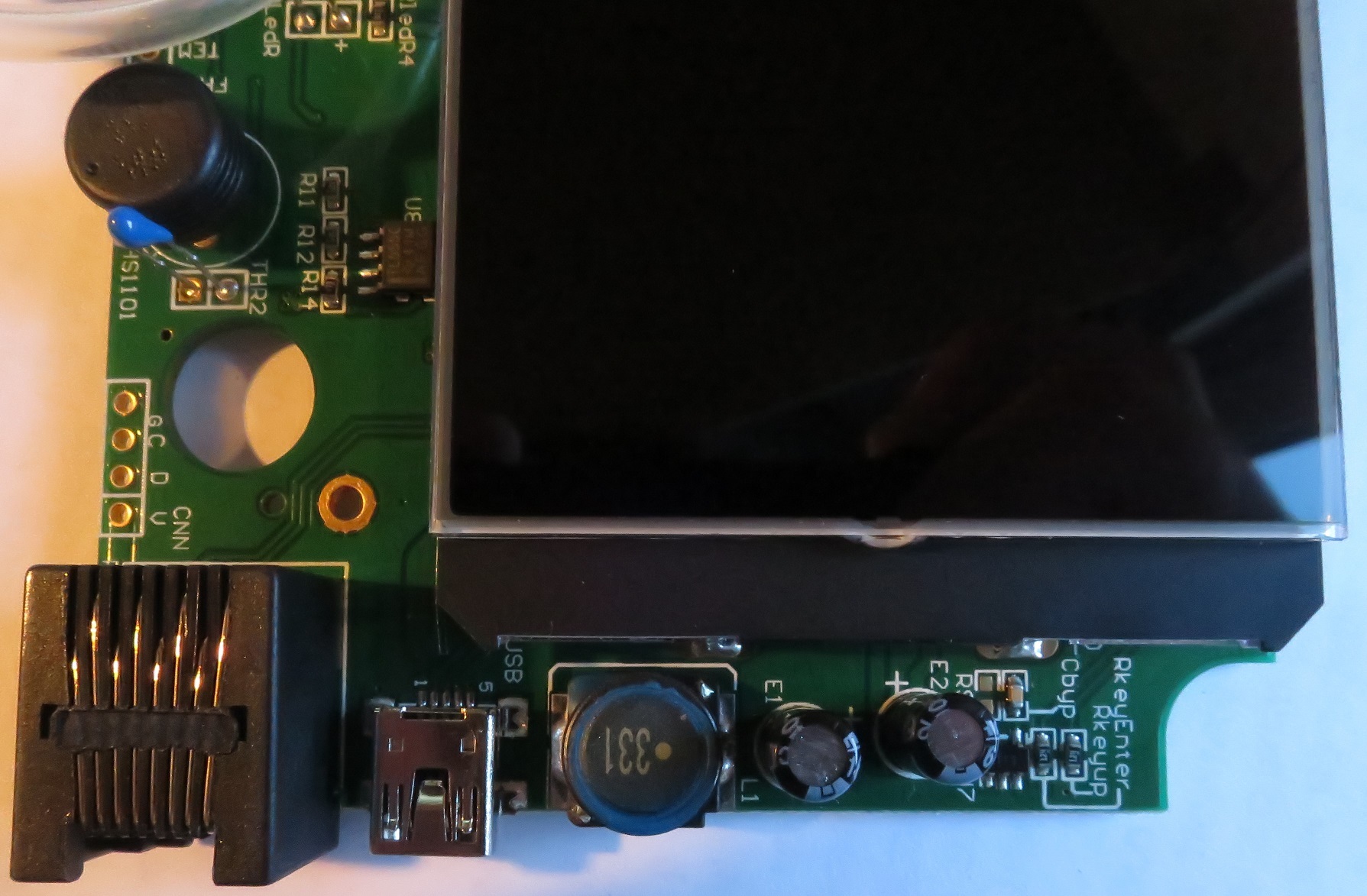
The next thing I noticed is 4 sets of diagnostic contacts, divorced at the edges of the board.
The first is located behind the screen on the left and WritePort is signed, unfortunately, I do not know what it is for.

The second is located on the upper right, pins are signed as down , up , ent , mode . Google says they are used to calibrate the CO2 sensor.
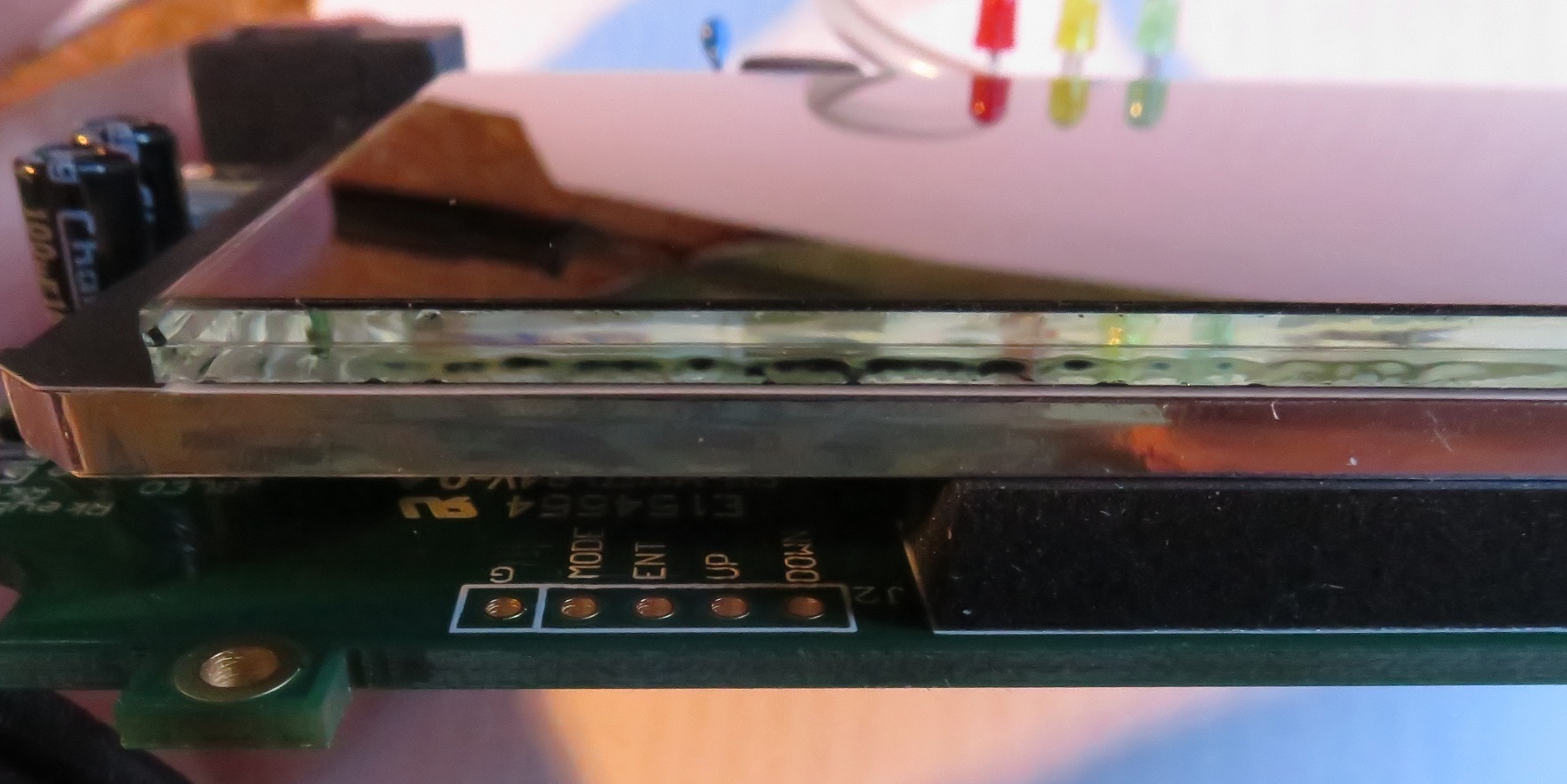
Pins on the bottom left are signed as tem fhus vlad rfc and G , Google didn’t suggest anything meaningful, tem is definitely temperature, the rest is unknown.
upd: in comments vanxant prompted that fhus - frequency humidity sensor

Well, finally, on the lower right, the contacts that go to RJ45 are duplicated. Just they turned out to be the most useful in my study. I came across a page where the Zyaura device was also described with an RJ45 port and similar G, C, D, V contacts.
In the same place the sketch for Arduino was laid out , allowing to read from them information of sensors.
I summarize:
The "air quality monitor" turned out to be more useful than it looks at first glance. Obviously, it can be used in the “smart home” system for monitoring CO2 levels and more. I hope that the post will answer the questions of those who doubted whether to start their practical experiments.
UPD:
general photos added, photo of an unsoldered chip under the screen
having turned on the device in a disassembled state, I shot a video of the CO2 sensor operation
I just want to warn you that under the cut there will be only photos and my assumptions, unfortunately I don’t have the opportunity to check everything in practice.

upd:
added, not due to criminal negligence, photos of the general plan.
Also added bonus video work CO2 sensor
A small preliminary summary of the information that I collected before I decided to disassemble the device. Of course, Dadget did not develop this device themselves. Real manufacturer: Zyaura . Their website states that there are two modifications - ZG1683R and ZG1683RU - the latter has the ability to connect to a computer via USB for taking readings. Since, when connected to a PC, my device is not defined as a device and does not interact with the computer at all, I concluded that this is most likely a ZG1683R.
The device is disassembled by unscrewing 3 screws from the back side. Then just need to overcome the plastic latches on the perimeter. The first thing that catches your eye: behind the plug on the case was an RJ45 connector.
The device board is well signed, for example, its model is indicated next to the humidity sensor - it is HS1101. Unfortunately, I couldn’t find any inscriptions on the sensor itself, but if it’s really HS1101, then the device’s humidity measurement range of 20% -90% seems very strange, since the sensor itself can measure from 1% -99% by datasheet. The strangeness of cutting the range to 20% is that in the winter time in the apartment, if the owner did not bother with additional moisture, the device will always show “Lo” instead of humidity.
')
Go to USB. It can be seen that the data ± tracks from the connector go somewhere deep under the screen. Unfortunately, I did not dare to unsolder a huge number of legs of the screen to look under it, fearing to damage the expensive device due to its curvature. Where exactly the tracks go, I could not determine, but under the screen you can see the seat under the microcircuit.
I can assume that the tracks go to it, and then you can say goodbye to USB data removal, or, alternatively, they can go to some other chip, and USB data sharing is turned off by software or hardware - this is more optimistic .
The next thing I noticed is 4 sets of diagnostic contacts, divorced at the edges of the board.
The first is located behind the screen on the left and WritePort is signed, unfortunately, I do not know what it is for.
The second is located on the upper right, pins are signed as down , up , ent , mode . Google says they are used to calibrate the CO2 sensor.
Pins on the bottom left are signed as tem fhus vlad rfc and G , Google didn’t suggest anything meaningful, tem is definitely temperature, the rest is unknown.
upd: in comments vanxant prompted that fhus - frequency humidity sensor
Well, finally, on the lower right, the contacts that go to RJ45 are duplicated. Just they turned out to be the most useful in my study. I came across a page where the Zyaura device was also described with an RJ45 port and similar G, C, D, V contacts.
In the same place the sketch for Arduino was laid out , allowing to read from them information of sensors.
I summarize:
The "air quality monitor" turned out to be more useful than it looks at first glance. Obviously, it can be used in the “smart home” system for monitoring CO2 levels and more. I hope that the post will answer the questions of those who doubted whether to start their practical experiments.
UPD:
general photos added, photo of an unsoldered chip under the screen
having turned on the device in a disassembled state, I shot a video of the CO2 sensor operation
Source: https://habr.com/ru/post/367695/
All Articles